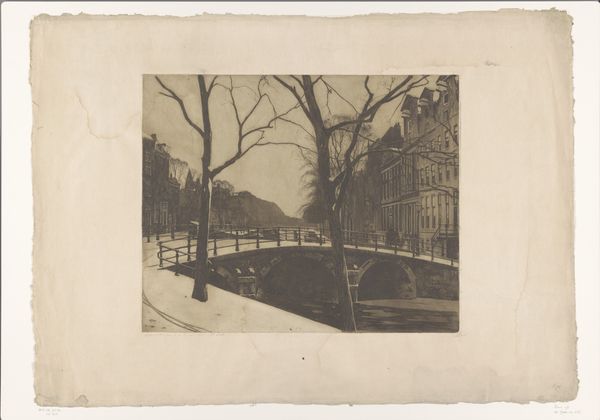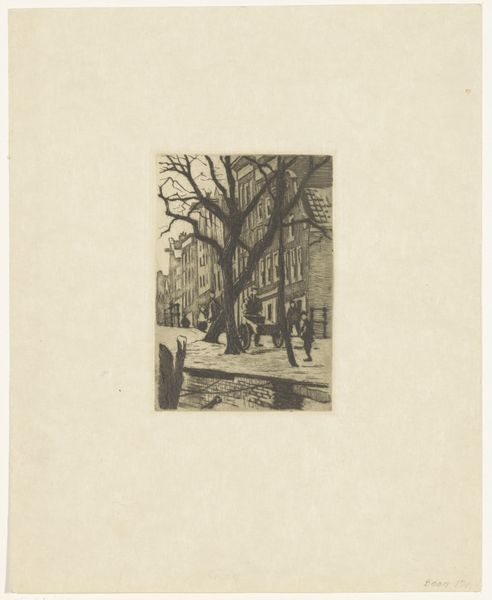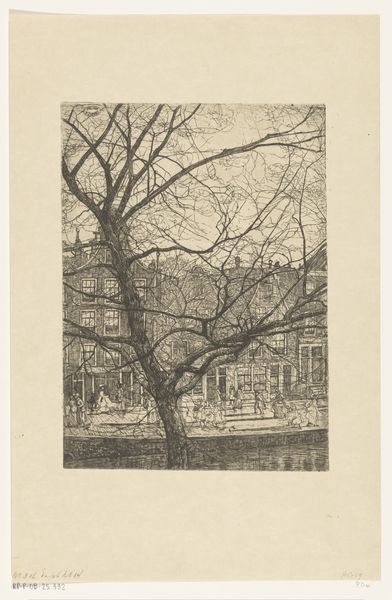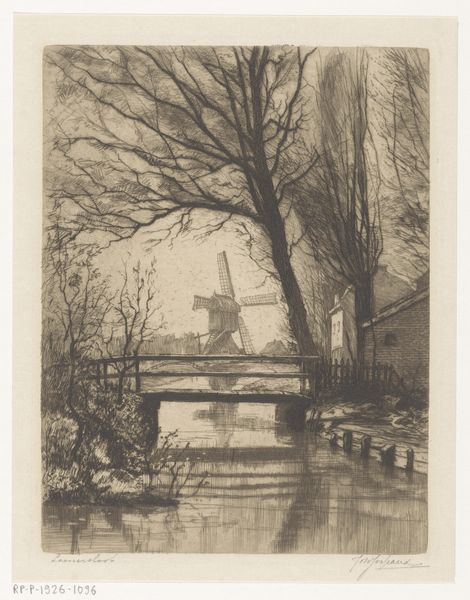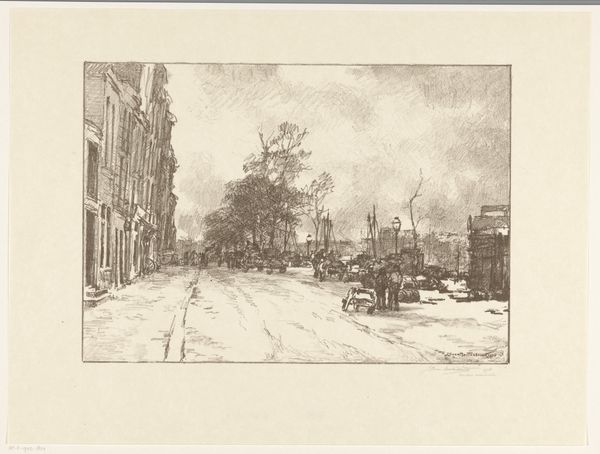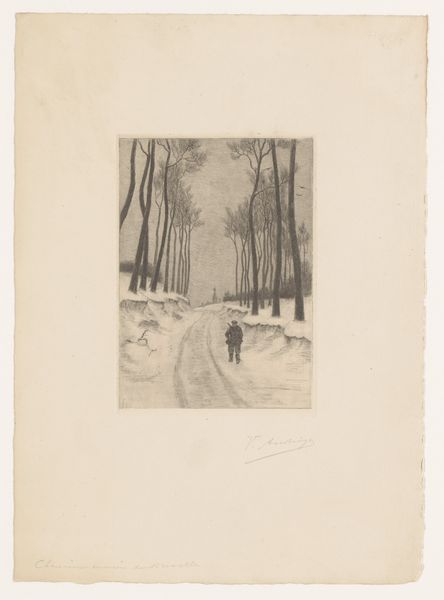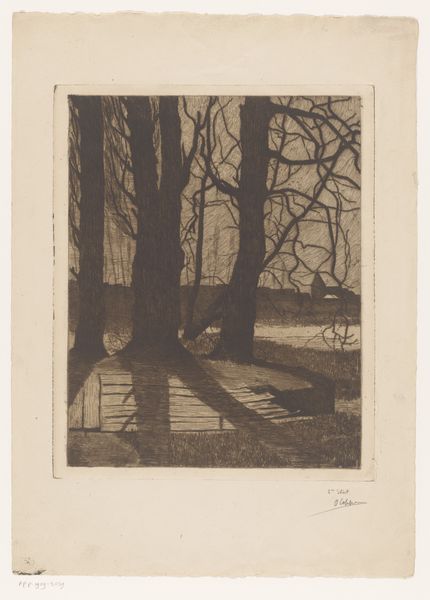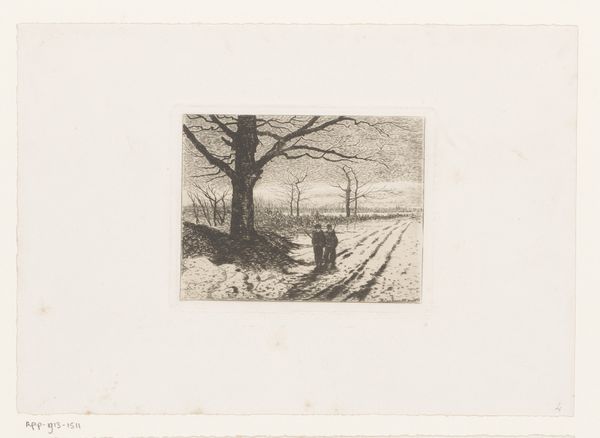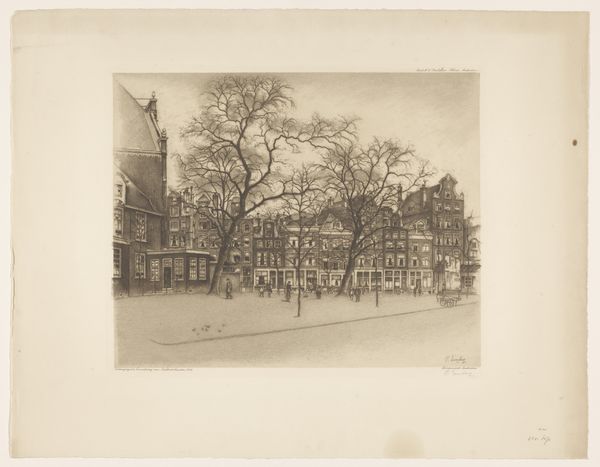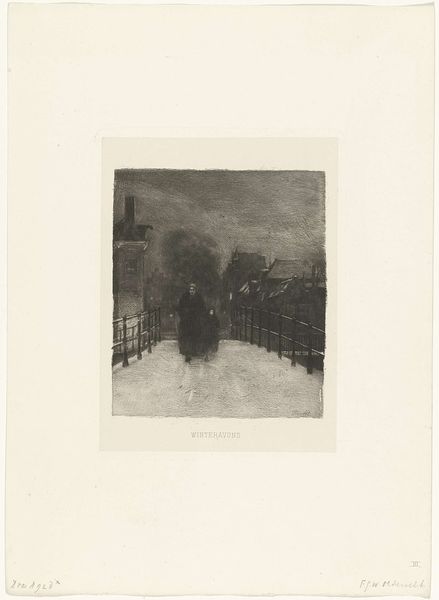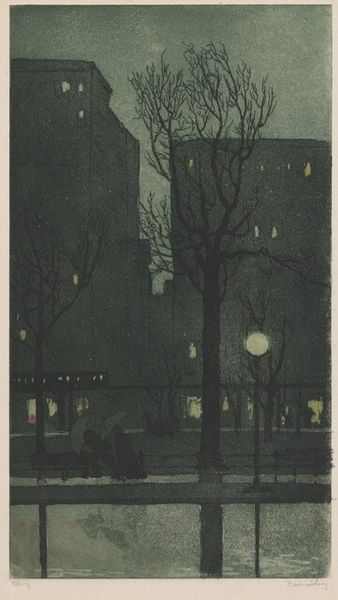
print, etching
#
print photography
#
tree
#
snow
#
dutch-golden-age
# print
#
etching
#
landscape
#
cityscape
#
realism
Dimensions: height 469 mm, width 400 mm
Copyright: Rijks Museum: Open Domain
Curator: Welcome to this intimate portrayal of Amsterdam's Prinsengracht canal, an etching by Frans Everbag, created sometime between 1887 and 1931. Editor: What immediately strikes me is the interplay of light and shadow. The composition, with its stark contrast, feels almost theatrical. It's as if the artist is staging a winter scene. Curator: Indeed. Everbag lived and worked in Amsterdam; naturally, he engaged with such local scenes. This piece is part of a larger tradition of Dutch landscape art where cityscapes embody national identity and bourgeois values. Notice how the artist portrays the tranquility of city life even amidst the stark winter conditions. Editor: Absolutely, the realism is captivating. But there's something more. The stark lines of the canal's edge contrast with the snow, highlighting texture. How does this aesthetic choice reflect a particular artistic movement of that period? Curator: Well, consider that it reflects back to the New Hague School with tonalism. It’s less a dramatic spectacle and more of a quiet meditation on place and time. One can explore the print market then, where similar realistic landscape pieces celebrated Dutch national identity during that turbulent period. Editor: Yes, and there's the looming darkness contrasted against the buildings’ faint glow... How were these urban narratives used in relation to public imagination or to create a shared historical context for Dutch identity? Curator: You are close! They often promoted the idea of the Netherlands as a safe haven of stability during a period of colonial change. Art institutions legitimized depictions of this sort of image that reified its status. This art provided citizens a point of reference to create a vision of "Dutchness." Editor: Fascinating. The formal choices reinforce this cultural narrative of peace and groundedness. I see what he achieves in terms of form—how light, shade, and lines contribute to that mood. Curator: Exactly. Art isn't created in a vacuum; pieces like "Prinsengracht" participated in the larger dialogue on urban planning, historical preservation, and constructing collective memories. Everbag's piece contributes to how these cultural objects shape us in ways that are profound, even today. Editor: It makes you consider your position within its wider cultural legacy as well as its aesthetic dimensions, no? Curator: Yes, let's move on to our next piece.
Comments
No comments
Be the first to comment and join the conversation on the ultimate creative platform.

